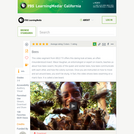
In this video segment from WILD TV, learn about bees and the different techniques for handling them.
- Subject:
- Arts and Humanities
- Material Type:
- Lecture
- Provider:
- PBS LearningMedia
- Provider Set:
- Teachers' Domain
- Date Added:
- 08/26/2008

In this video segment from WILD TV, learn about bees and the different techniques for handling them.

This lesson is intended to be used wtih middle to high school learners. It can be used as a library or ELA classroom lesson. The idea is best used when imulated with books from the local library to which students have access.The video concludes with a challenge for viewers to use the attached document, entitled "A Scary Situation" to write their own story.

This course looks at comedy in drama, novels, and films from Classical Greece to the twentieth century. Focusing on examples from Aristophanes, Shakespeare, Cervantes, Molière, Wilde, Chaplin, and Billy Wilder, along with theoretical contexts, the class examines comedy as a transgressive mode with revolutionary social and political implications. This is a Communications Intensive (CI) class with emphasis on discussion, and frequent, short essays.
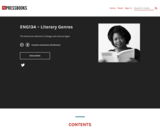
This open textbook is created to accompany the course ENGL134 - Literary Genres at Bay Path University.

The 11th grade learning experience consists of 7 mostly month-long units aligned to the Common Core State Standards, with available course material for teachers and students easily accessible online. Over the course of the year there is a steady progression in text complexity levels, sophistication of writing tasks, speaking and listening activities, and increased opportunities for independent and collaborative work. Rubrics and student models accompany many writing assignments.Throughout the 11th grade year, in addition to the Common Read texts that the whole class reads together, students each select an Independent Reading book and engage with peers in group Book Talks. Students move from learning the class rituals and routines and genre features of argument writing in Unit 11.1 to learning about narrative and informational genres in Unit 11.2: The American Short Story. Teacher resources provide additional materials to support each unit.

In this unit, students will explore great works of American literature and consider how writers reflect the time period in which they write. They will write two literary analysis papers and also work in groups to research and develop anthologies of excellent American stories.
ACCOMPLISHMENTS
Students read and analyze stories from several 19th-, 20th-, and 21st-century American authors. After researching a time period, they select stories from that period to create an anthology. The readings enhance their understanding of the short story, increase their exposure to well-known American authors, and allow them to examine the influence of social, cultural, and political context.
Students examine elements of short stories and have an opportunity for close reading of several American short stories. During these close readings, they examine the ways that short story writers attempt to explore the greater truths of the American experience through their literature.
GUIDING QUESTIONS
These questions are a guide to stimulate thinking, discussion, and writing on the themes and ideas in the unit. For complete and thoughtful answers and for meaningful discussions, students must use evidence based on careful reading of the texts.
If you were to write a short story about this decade, what issues might you focus on?
What defines a short story? Just length?
To what extent do these stories reflect the era or decade in which they were written?
To what extent are the themes they address universal?
CLASSROOM FILMS
History.com has short videos on the Vietnam War (“Vietnam” and “A Soldier's Story”).
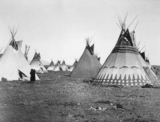
In this lesson, you will explore how writers address issues of identity and persona across genres. You will read a famous poem “We Wear the Mask,” and consider how it relates to your other readings.In this lesson, students will explore how writers address issues of identity and persona across genres. They will read a famous poem “We Wear the Mask,” and consider how it relates to other readings.
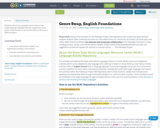
Students will act out a popular movie trailer in the target language. Keeping with the original plot of the movie, students have to act out the trailer as if it were a different genre.
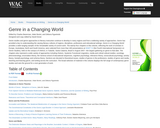
Genre studies and genre approaches to literacy instruction continue to develop in many regions and from a widening variety of approaches. Genre has provided a key to understanding the varying literacy cultures of regions, disciplines, professions and educational settings. Genre in a Changing World provides a wide-ranging sampler of the remarkable variety of current work. The twenty-four chapters in this volume, reflecting the work of scholars in Europe, Australasia, North and South America, were selected from more than 400 presentations at SIGET IV (the Fourth International Symposium on Genre Studies), held on the campus of UNISUL in Tubarão, Santa Catarina, Brazil in August 2007—the largest gathering on genre to that date. The chapters also represent a wide variety of approaches including rhetoric, Systemic Functional Linguistics, media and critical cultural studies, sociology, phenomenology, enunciation theory, the Geneva school of educational sequences, cognitive psychology, relevance theory, sociocultural psychology, activity theory, Gestalt psychology, and schema theory. Sections are devoted to theoretical issues, studies of genres in the professions, studies of genre and media, teaching and learning genre, and writing across the curriculum. The broad selection of material in this volume displays the full range of contemporary genre studies and sets the ground for a next generation of work.
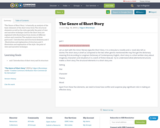
'The Genre of Short Story ' is basically an analysis of the basic elements of the short story form.The structural elements as well as the style,specially the point of view and narrative technique used in the short story are explained with illustrations from stories of different culture and countries.The analysis runs in three parts:unit I- Introduction and structural elements,unit 2 -Illustrations and explanation of structure,unit 3-illustration and explanation of the style- the point of view and narrative technique.
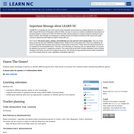
Students apply knowledge of genres to identify different genres from "reading-alouds of excerpts" from selected books representing different genres.
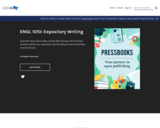
This open educational resource (OER) was compiled for use in ENGL 1010 – Expository Writing, the first of Middle Tennessee State University’s two first-year writing courses. This OER is divided into five main sections, all of which are designed with ENGL 1010’s course objectives in mind. Each of those sections contains a number of readings related to the section’s topic, with many of those readings curated from other open-access texts.
The first-year writing sequence at Middle Tennessee State University takes a rhetorical approach to writing. This means that students are asked to consider how “good” writing is situational. There are no hard and fast “rules” for writing. Instead, there are conventions or norms and expectations specific to particular contexts. In ENGL 1010: Expository Writing, students practice identifying writing conventions across modes and contexts.

This course explores the international trade in television text, considering the ways in which ‘foreign’ programs find places within ‘domestic’ schedules. Looking at the life television texts maintain outside of their home market, this course examines questions of globalization and national cultures of production and reception. Students will be introduced to a range of positions about the nature of international textual trade, including economic arguments about the structuring of international markets and ethnographic studies about the role imported content plays in the formation of hybrid national identities. Students will be encouraged to consider the role American content is made to play in non-American markets.
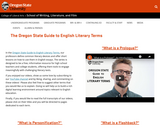
This free video series provides definitions of literary terms in English literature to students and teachers. It also offers examples of how these literary devices can be applied to poems, plays, novels, and short stories. We are in the process of translating the videos into Spanish and many of them now contain these subtitles.

This course investigates relationships between two media, film and literature, studying works linked across the two media by genre, topic, and style. It aims to sharpen appreciation of major works of cinema and of literary narrative. The course explores how artworks challenge and cross cultural, political and aesthetic boundaries. It includes some attention to theory of narrative. Films to be studied include works by Akira Kurosawa, John Ford, Francis Ford Coppolla, Clint Eastwood, Orson Welles, Billy Wilder, and Federico Fellini, among others. Literary works include texts by Aeschylus, Sophocles, Shakespeare, Cervantes, Honoré de Balzac, Henry James and F. Scott Fitzgerald.

The attached Remote Lesson Plan is designed for Grade 7 English Language Arts students. Students will get an introduction to genre and the different characteristics of genre. They will gain information through a slide show and a video. Digital flashcards are provided to help with learning the terms and their definitions. A Check for Understanding is provided to assess how each student is understanding the characteristics of a variety of literary and informational. This Remote Lesson Plan addresses the following NDE Standard: NE LA 7.1.6.gIt is expected that this Remote Learning Plan will take students 90 minutes to complete.